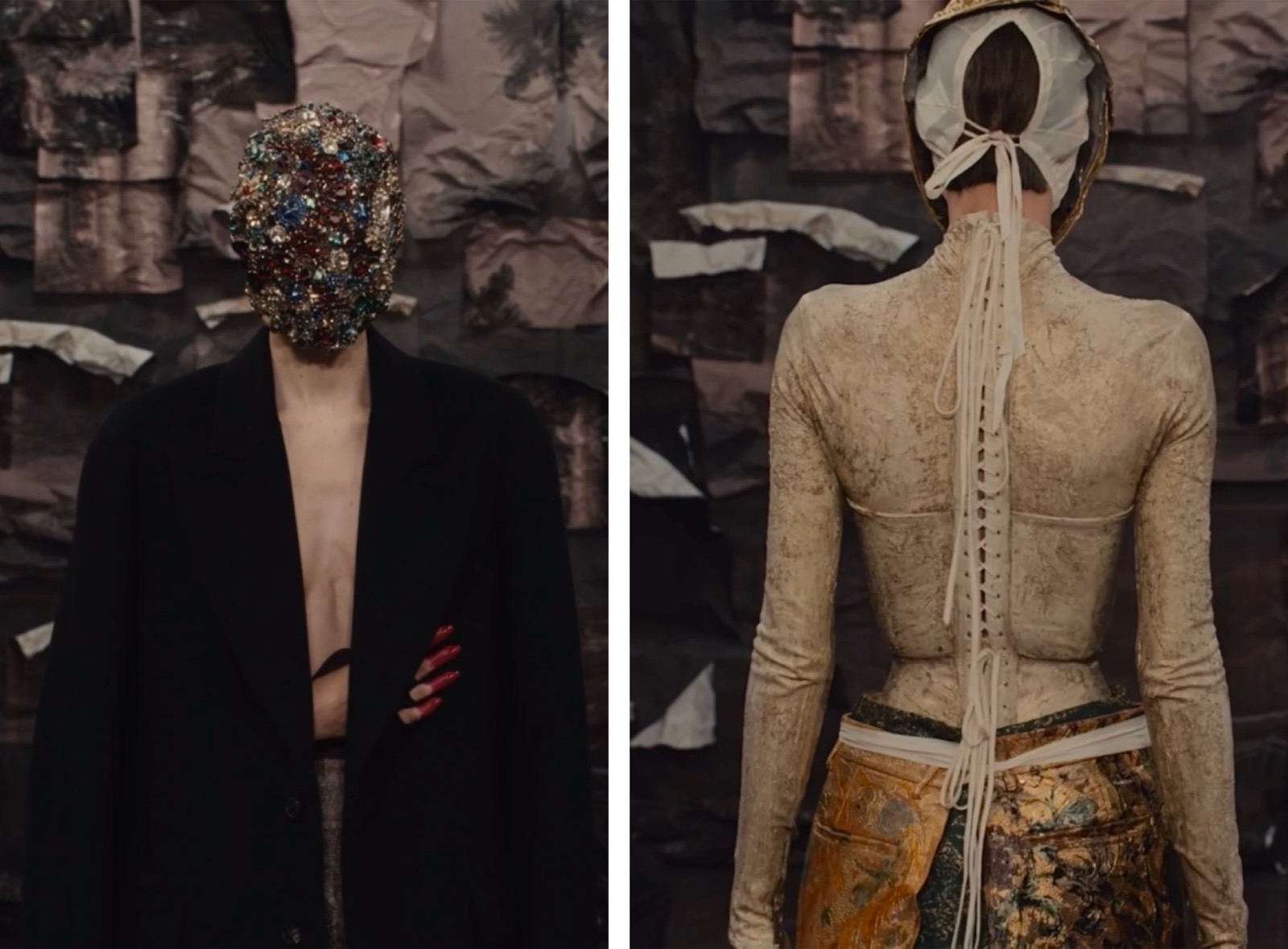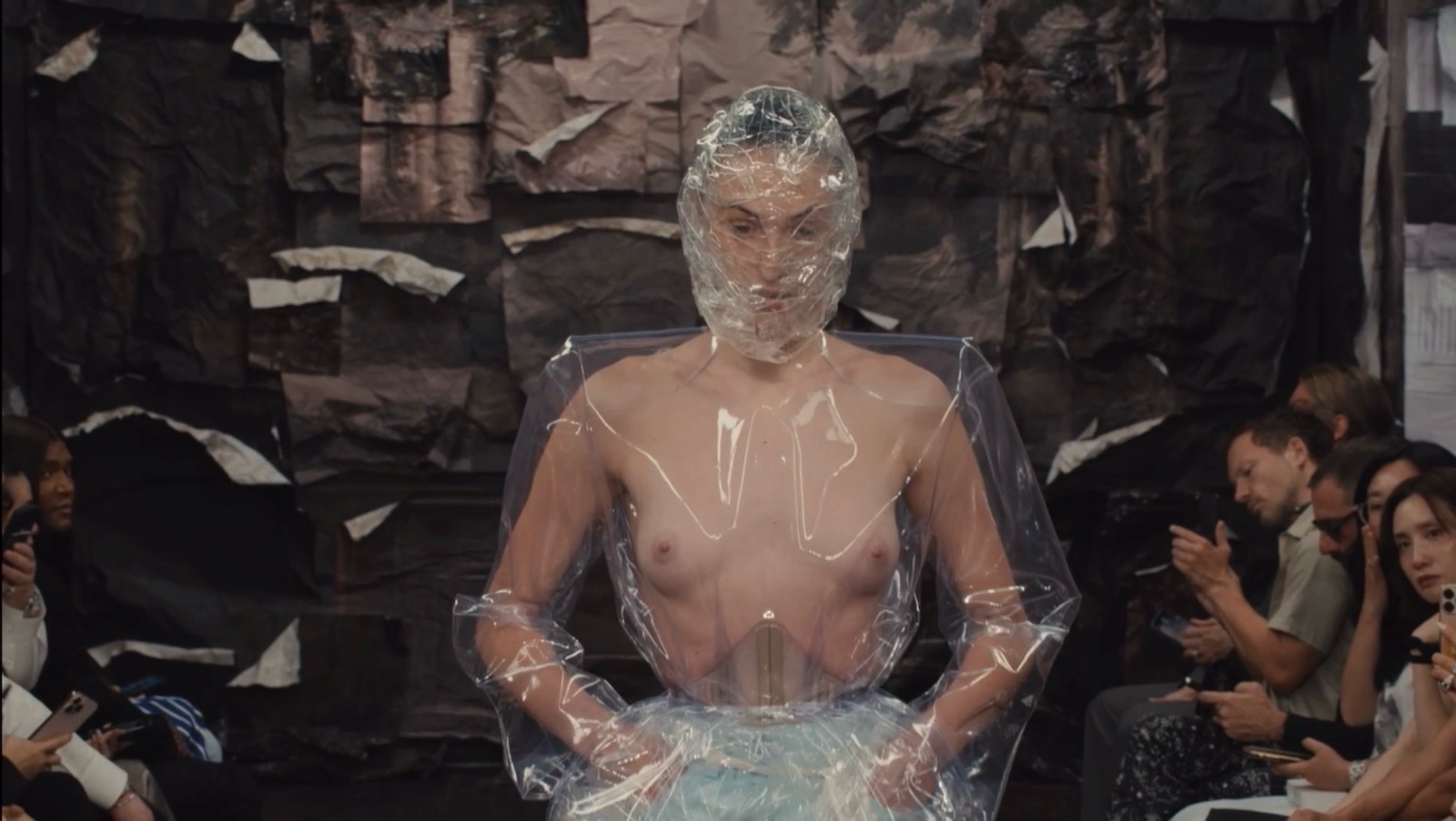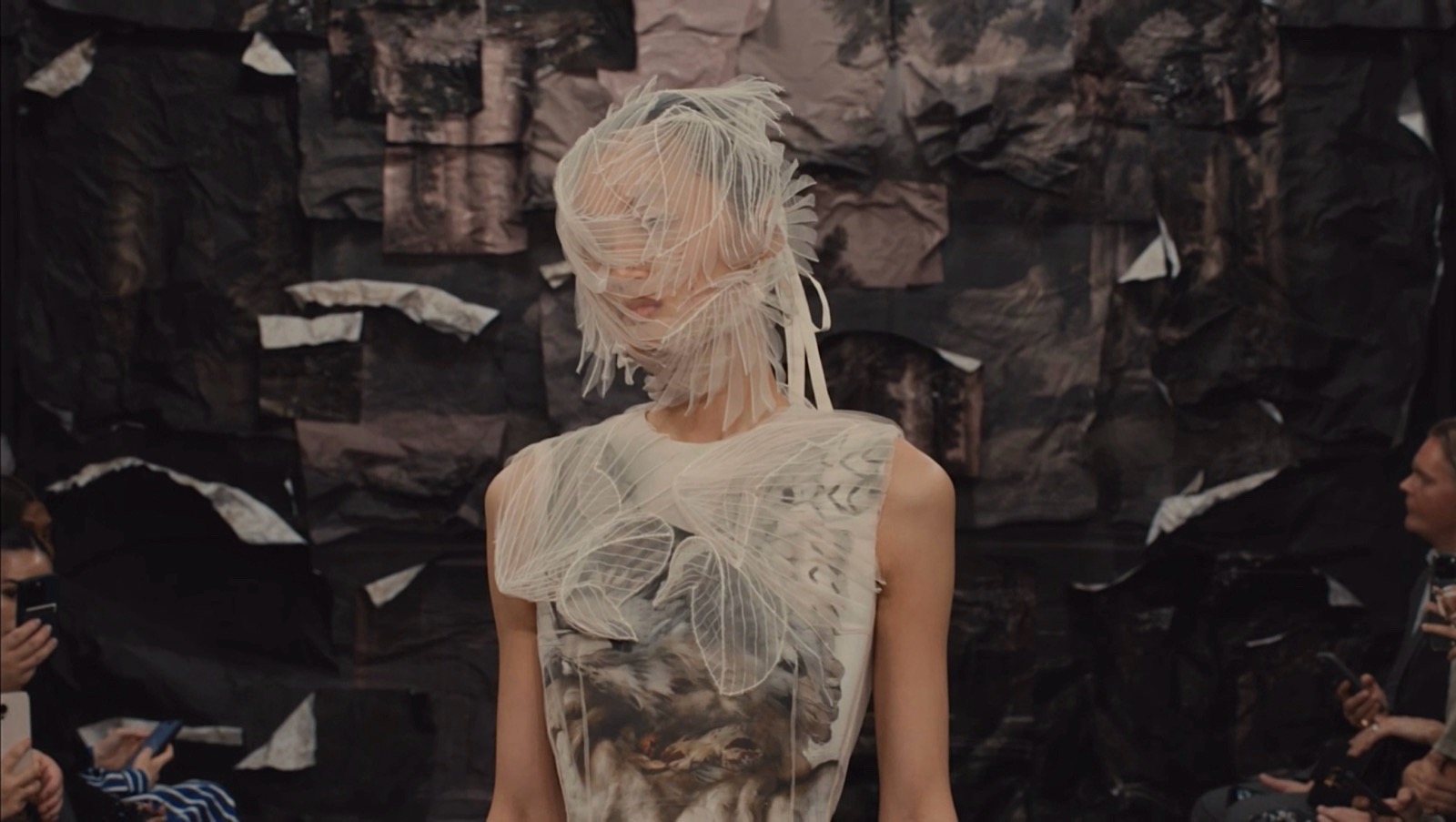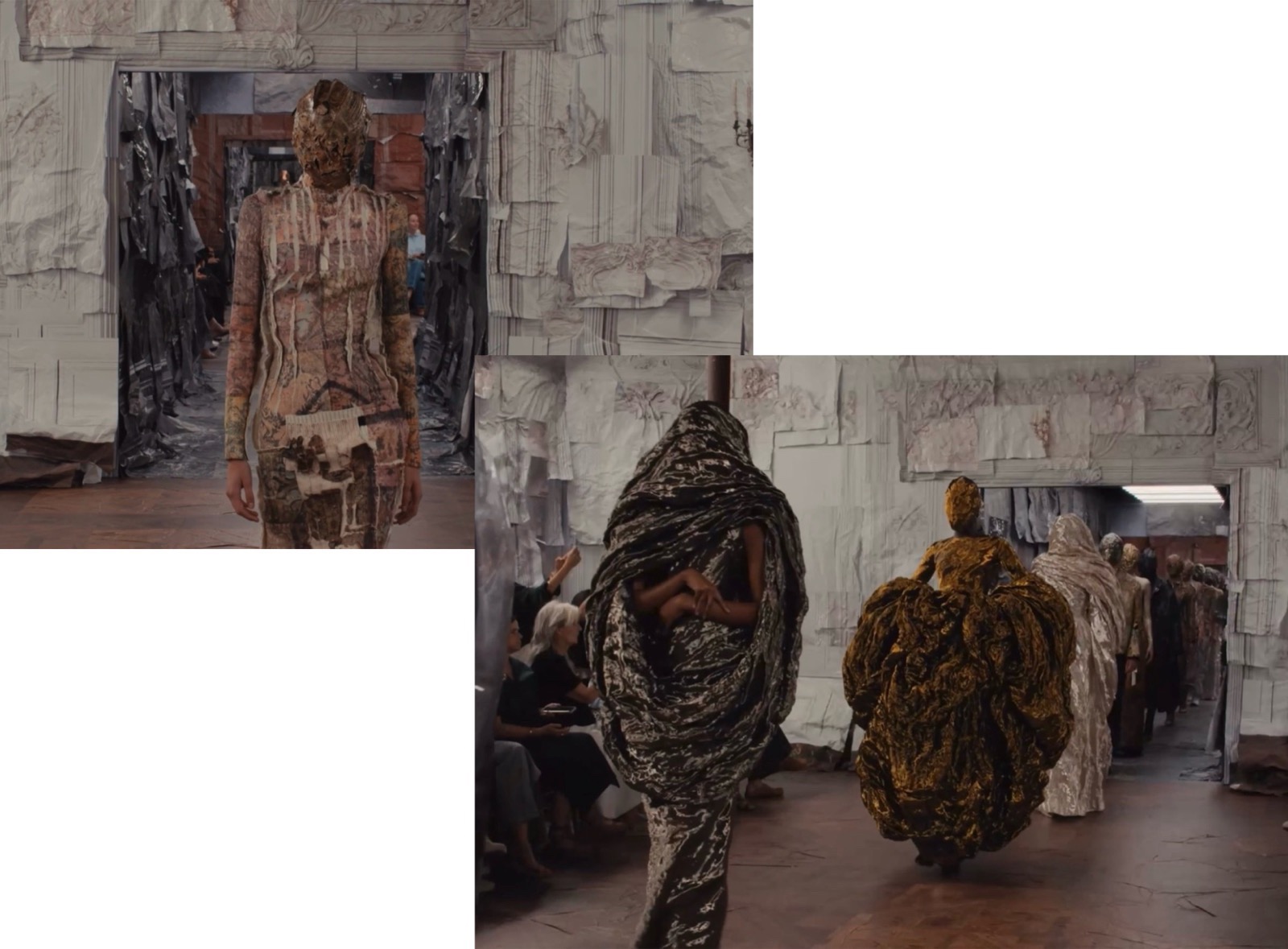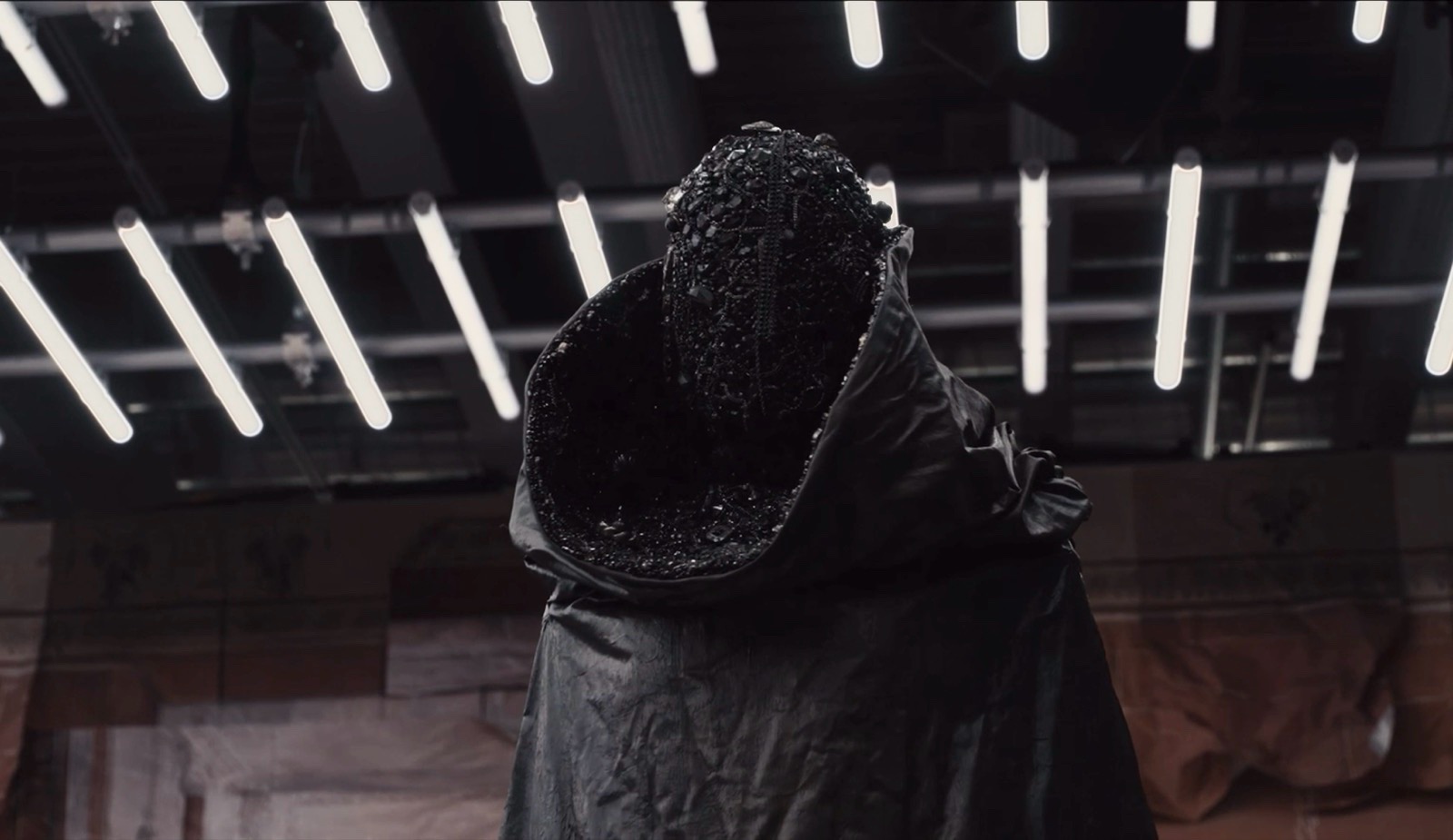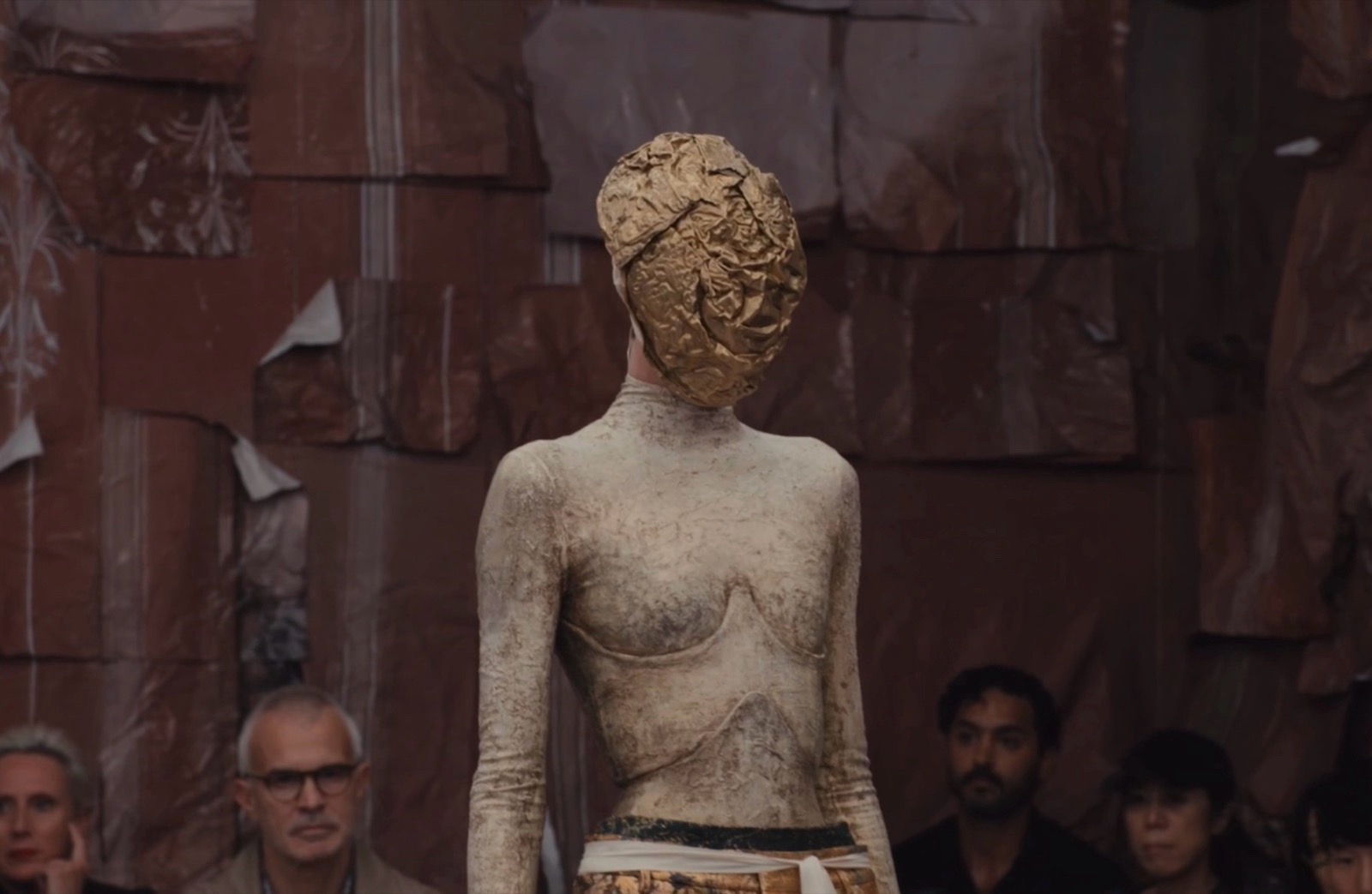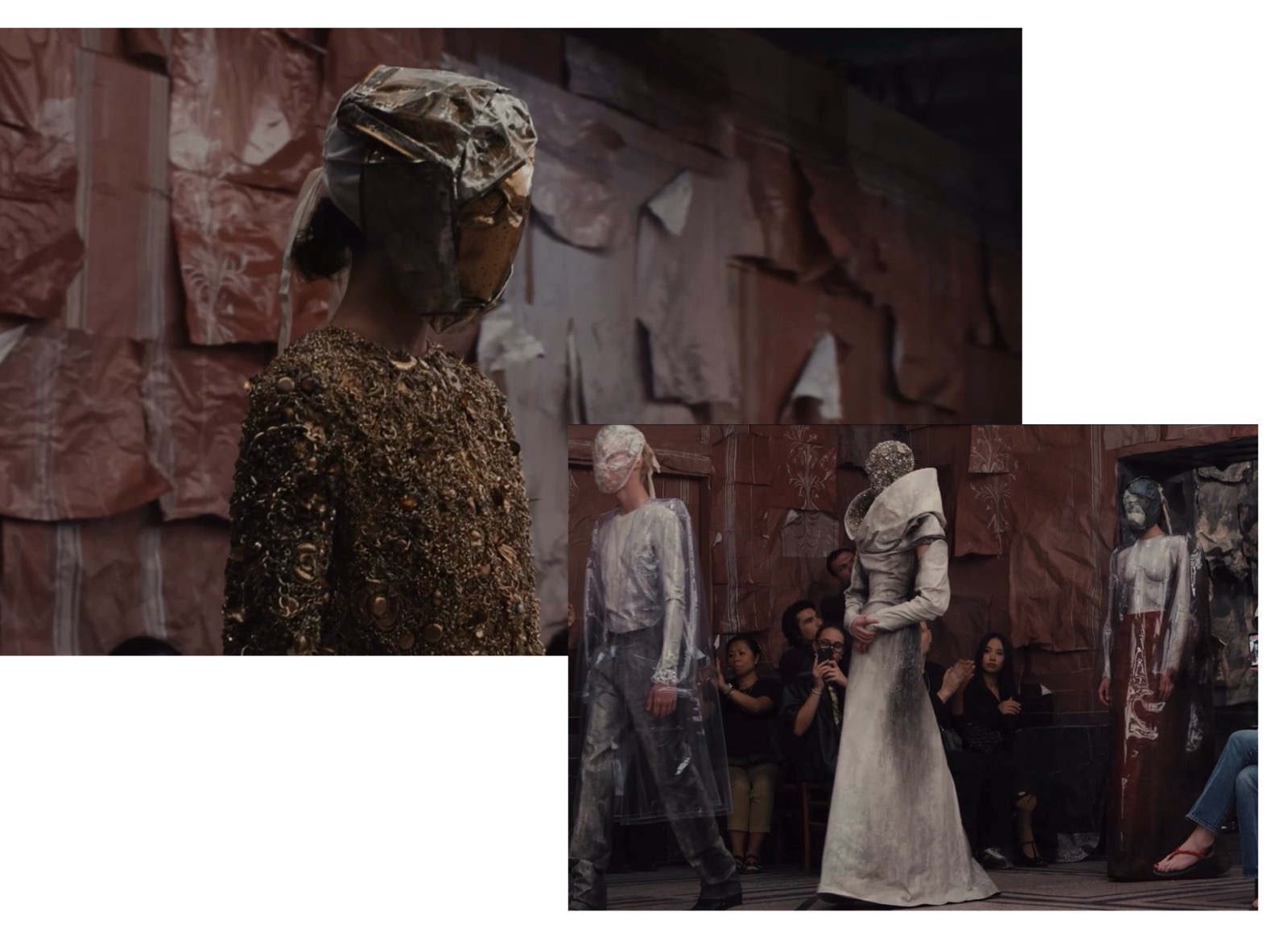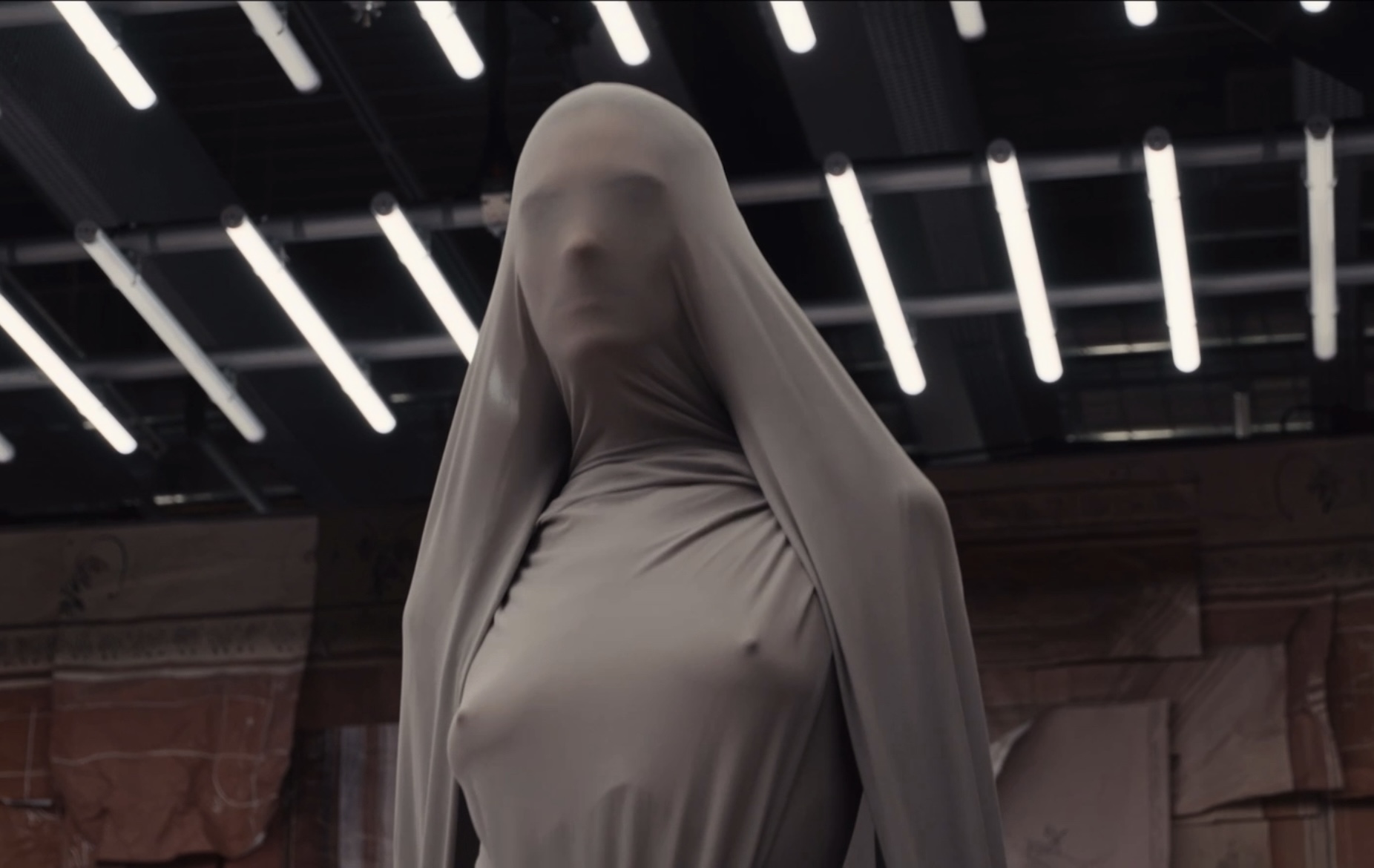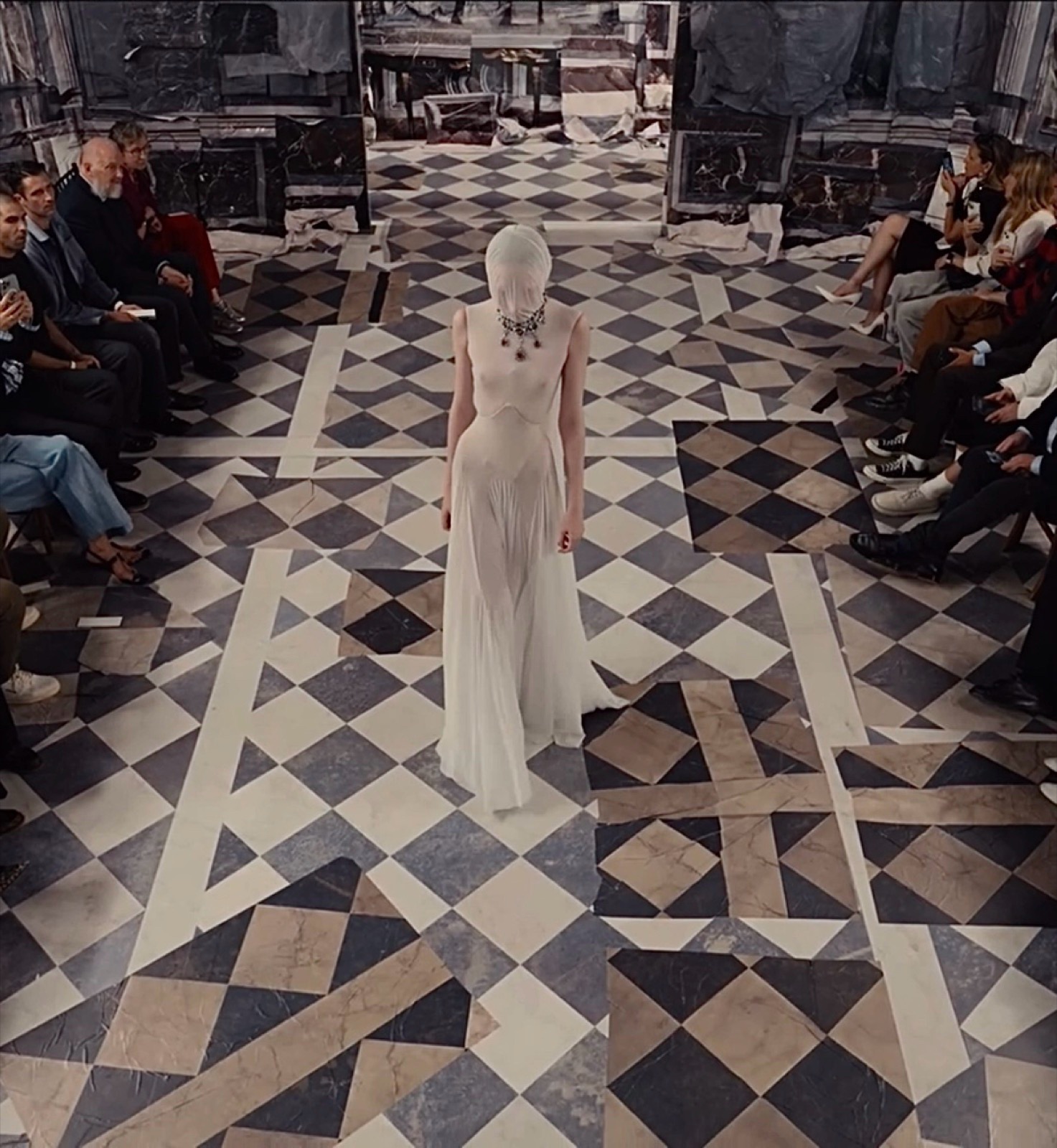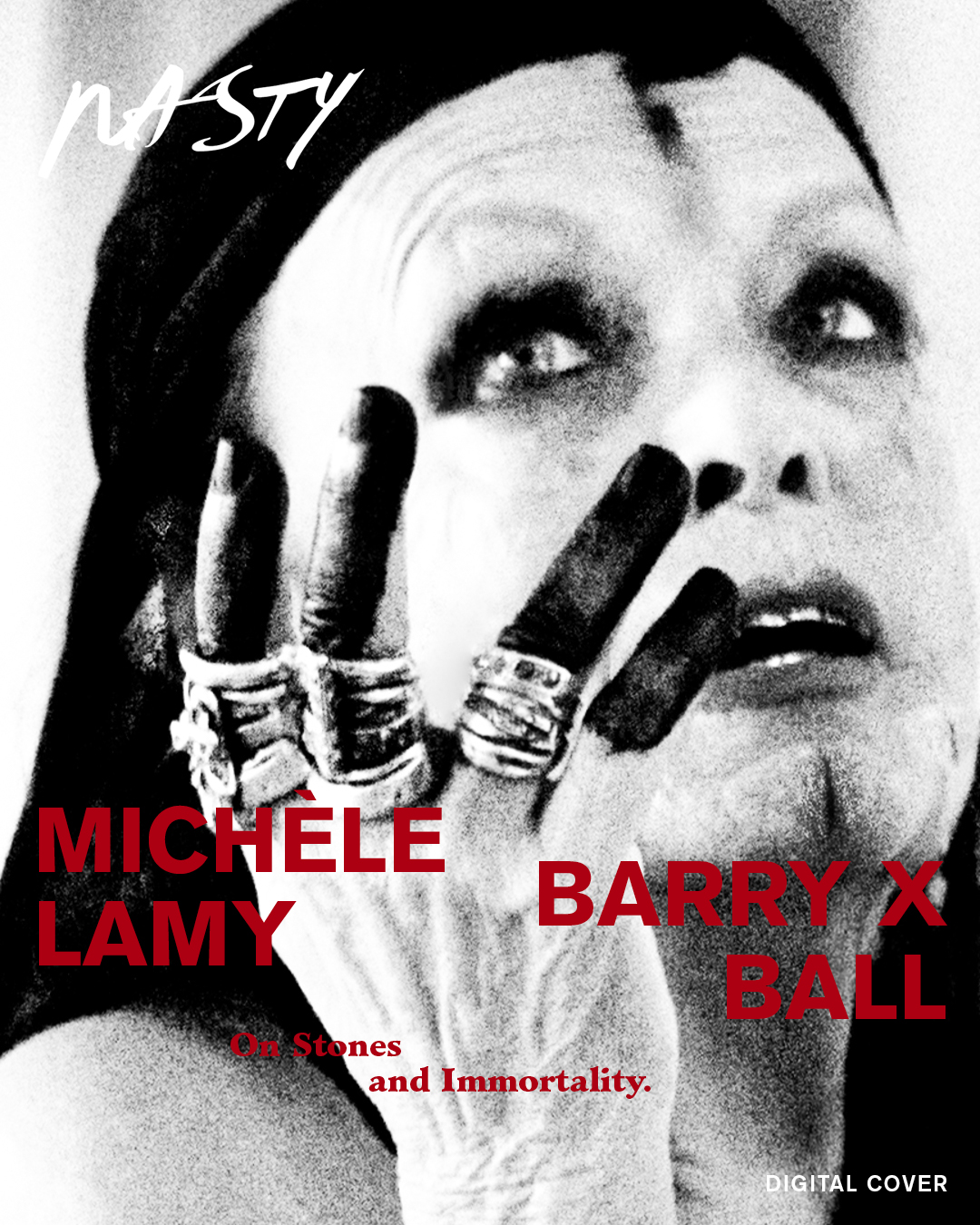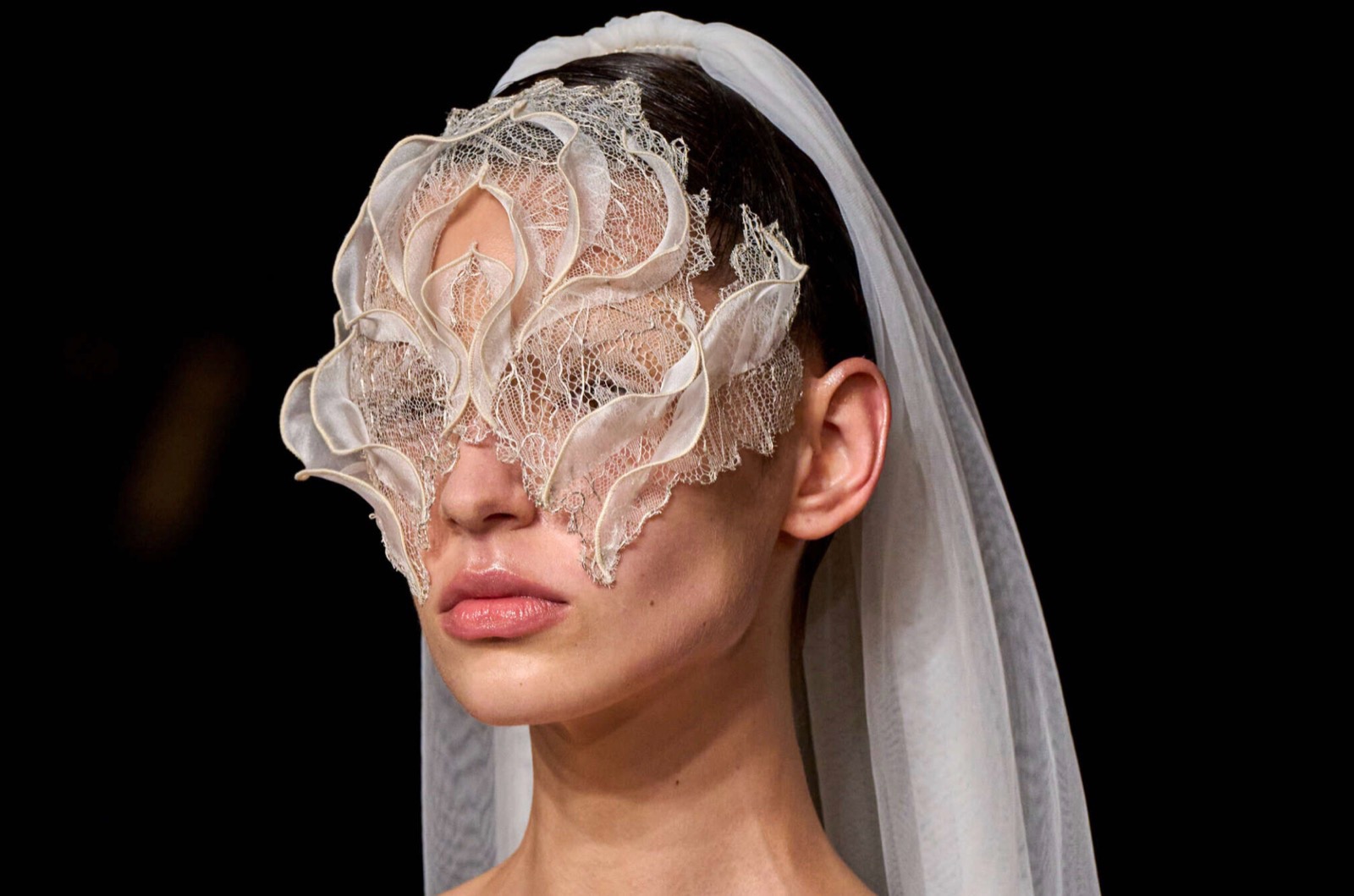A Spoon, a Wall, and the Invitation to Decay
The experience began not with the runway, but with the invitation itself: a video of an ancient spoon being slowly scraped across a surface of light gesso, peeling it away and revealing a delicate floral motif that resembled a faded tattoo. That image, etched into the viewer’s mind, returned insistently as the show began and the eye adjusted to its physical counterpart: the venue walls, entirely cloaked in torn, silver and brownish wallpaper, peeling in wide patches as though a tremor might cause the rest to collapse onto the crowd. The visual assonance between the two images framed the entire performance in a suspended state of erosion.
The Procession of Shadows
As the models emerged, the mise-en-scène conjured an abandoned Parisian apartment where forgotten dolls slowly come to life. Figures moved through dim rooms, their silhouettes distorted by light and fabric, most of the time faceless, their identities obscured by masks that ranged from bedazzled crystal to opaque plastic, from decaying bouquets turned into soft helmets to tin boxes and fractured porcelain. Some faces were sealed under silver tape, in a clear and knowing homage to Martin Margiela’s earliest Artisanal look.
The first look set the tone: a transparent mask of silver plastic, a plastic gown, and hands tied under its folds giving a sense of breathless constriction. With their earthy and dusty tones, the garments seemed to emerge from a heap, from rubble, as if excavated. With smart plays on transparencies, everything that should have been hidden was left visible, even the pain that the models seem to carry as interpreters of the designer’s story and of this world’s condition. In this sense the corsets, already introduced during Galliano’s tenure, returned in transparent iterations, allowing the viewer to read the pressure of the garment directly on the skin. It was disquieting and intimate at once.
Volume, Memory and Material Reclamation
Throughout the show, Martens repurposed volumes and silhouettes he had explored in previous projects, turning them into couture iterations that refused smoothness. There were echoes of his work for Jean Paul Gaultier’s co-ed collection particularly in the rounded, circular capes and sculptural shapes which in turn brought to mind the extravagant Egyptian silhouettes from Galliano’s Dior years. The genealogy was clear and deliberate: exaggeration was no longer just theatrical but turned into a language of presence and defiance.
Jeans played a prominent role, a further proof that this creative direction at Margiela stands as the continuation of the experimentation that Martens began at Y/Project and expanded at Diesel, where he explored the boundaries of denim not as a workwear cliché but as a couture-ready material. In several looks, destroyed textures were layered with the more refined tulle, recalling the jeans devoré techniques previously introduced at Diesel, now elevated into ghostly gowns.
One standout jacket resembled worn leather but moved like paper. Another skirt appeared composed from fragments of patchworked leather, evocative of Margiela’s early 1990s carré-silk scarf pieces, themselves built from cheap remnants found in Parisian flea markets. That bricolage spirit was everywhere: from the rust-stained pullovers to the shimmering gowns embellished with stones that appeared raw and unpolished, more akin to archaeological finds than precious gems.
 https://www.nastymagazine.com/wp-content/uploads/2022/05/leonor-fini-nasty-magazine-015.jpg
1600
1537
admin
https://www.nastymagazine.com/wp-content/uploads/2015/02/new-logo-basker-WHITE4.png
admin2022-05-24 13:14:022022-05-23 17:01:07Leonor Fini / Masquerade
https://www.nastymagazine.com/wp-content/uploads/2022/05/leonor-fini-nasty-magazine-015.jpg
1600
1537
admin
https://www.nastymagazine.com/wp-content/uploads/2015/02/new-logo-basker-WHITE4.png
admin2022-05-24 13:14:022022-05-23 17:01:07Leonor Fini / Masquerade
